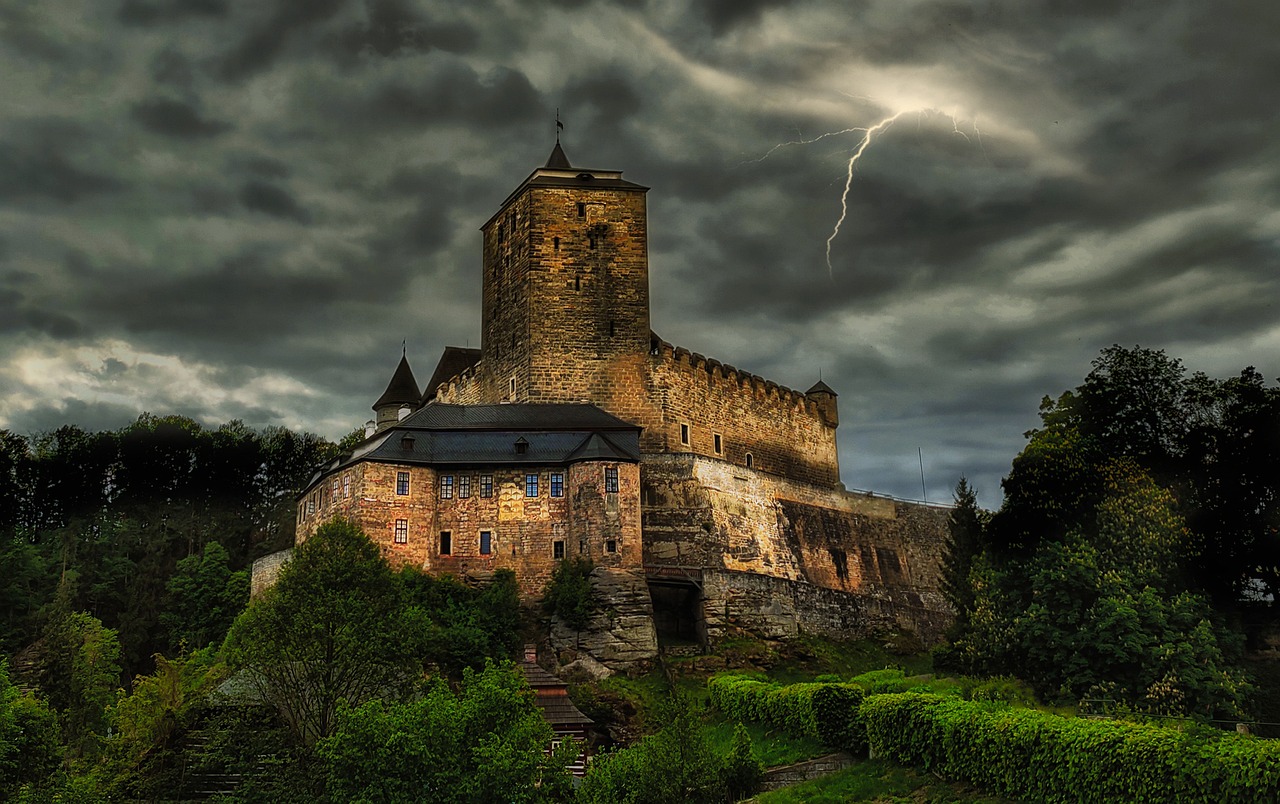
The Allure of Goth Gardens: A Symphony of Darkness and Beauty
By Gayil Nalls
Sign up for our monthly newsletter!
G ardens have long been a testament to human creativity and an expression of both order and wildness. Among the many styles of gardening, the Goth garden stands apart with its unique blend of darkness, mystery, and beauty—some of which can border on the eerie. Yet, these gardens offer a captivating atmosphere, particularly suited for setting the perfect mood for a Halloween party or moonlit gathering.
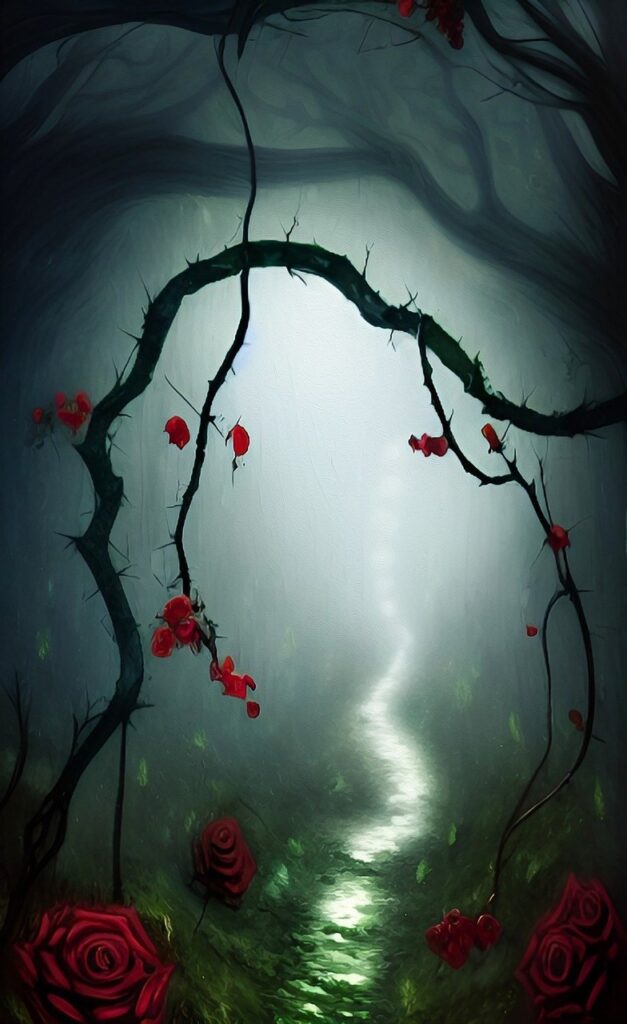
Drawing inspiration from Gothic literature, architecture, and fashion, Goth gardens, like the broader Gothic subculture, are characterized by a dramatic, somber, and dark aesthetic. Think of Tim Burton’s Beetlejuice or Netflix’s Wednesday—where the natural world and the macabre intertwine. These gardens are increasingly popular, often serving as both a personal retreat and a homage to the cultural and historical influences that give the Gothic its unique charm.
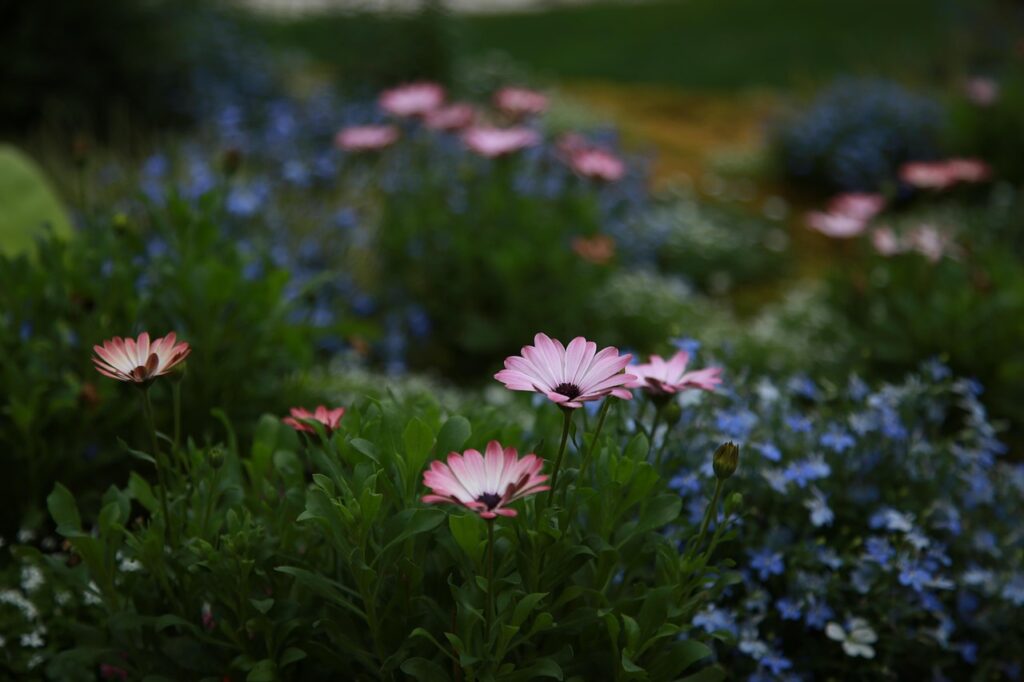
Unlike traditional gardens that thrive on bright, cheerful colors, Goth gardens embrace darker hues and a moody atmosphere. The palette includes deep purples, blacks, blood reds, burgundies, and shadowy greens. Signature plants such as black tulips, purple hyacinths, dark-leaved heucheras, and black hollyhocks contribute to this enigmatic ambiance. For a twist, even vegetables fit the aesthetic: eggplants, purple cauliflower, dark carrots, Redbor kale, and blackberries add a touch of eerie opulence. These foods aren’t just visually striking—they’re rich in plant compounds, brimming with health benefits, much like the mysterious allure they represent.
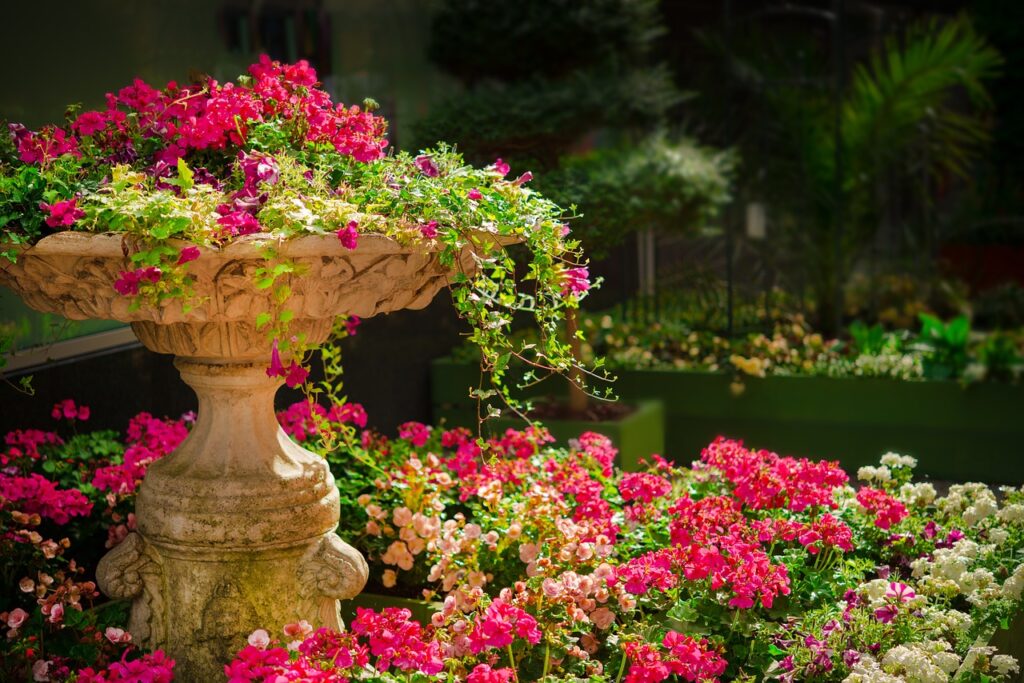
Architectural elements also play a crucial role in setting the scene. Gothic-inspired structures like wrought-iron gates, weathered stone statues, and crumbling ruins add an air of timelessness. Gothic arches and gazebos, reminiscent of the grandeur of cathedrals, provide focal points that draw the eye while evoking a sense of haunted history.

Water features contribute further to the mysterious atmosphere, with dark, reflective ponds and quietly trickling fountains lending a serene and introspective quality to the garden. As Edgar Allan Poe wrote in The Fall of the House of Usher, “There was an iciness, a sinking, a sickening of the heart—an unredeemed dreariness of thought which no goading of the imagination could torture into aught of the sublime.” The soft murmuring of water in a Goth garden offers a similar meditative stillness, haunted yet beautiful.
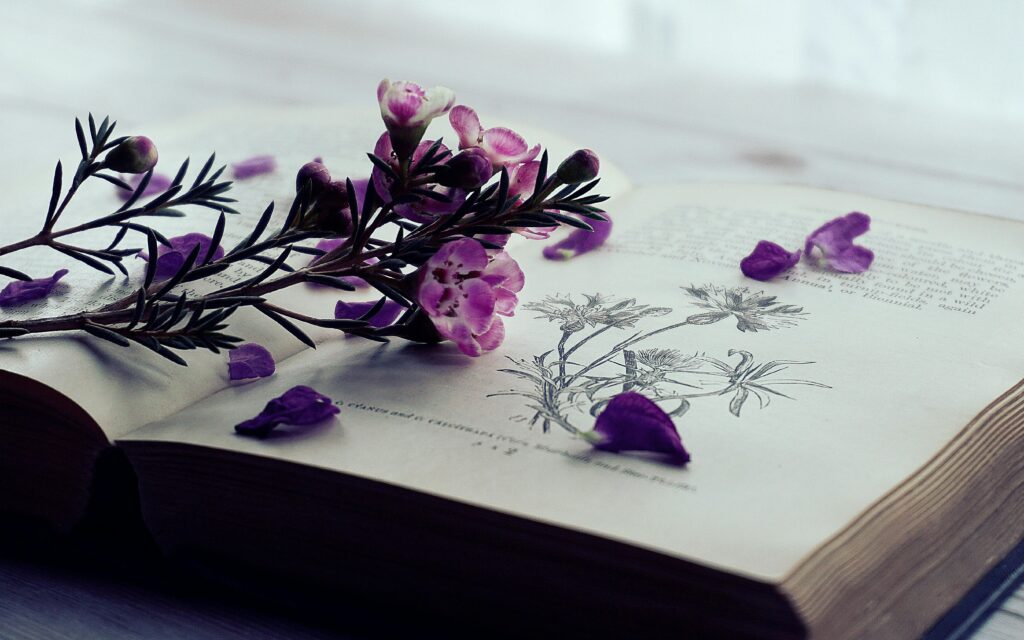
Growing in popularity, the Goth garden style is deeply rooted in the Gothic subculture that emerged in the late 20th century. This movement drew heavily from the darker elements of Gothic literature from the 18th and 19th centuries, such as Mary Shelley’s Frankenstein, Bram Stoker’s Dracula, and the eerie tales of Edgar Allan Poe. These works explore themes of death, decay, and the supernatural—perfect inspirations for gardens filled with dark, brooding plants and wild, slightly unkempt designs. As Poe himself wrote, “Beauty of whatever kind, in its supreme development, invariably excites the sensitive soul to tears” (The Philosophy of Composition), and in a Goth garden, it’s the strange and unexpected beauty that stirs the emotions.
In addition to literature, Gothic architecture influences many of the garden’s physical elements. Gothic cathedrals, with their pointed arches, ribbed vaults, and flying buttresses, serve as models for the dramatic structures within Goth gardens. These architectural features not only add a sense of grandeur but also reflect the garden’s interplay between nature and the human imagination.
The Romantic movement of the 19th century, with its focus on emotion, the sublime, and the untamed aspects of nature, also plays a key role in shaping the Goth garden aesthetic. The Romantics celebrated nature’s wildness and the melancholy it could invoke, aligning perfectly with the slightly overgrown, mysterious quality of these gardens. As Mary Shelley wrote in Frankenstein, “I feel exquisite pleasure in dwelling on the recollections of childhood, before misfortune had tainted my mind, and changed its bright visions of extensive usefulness into gloomy and narrow reflections upon self.”
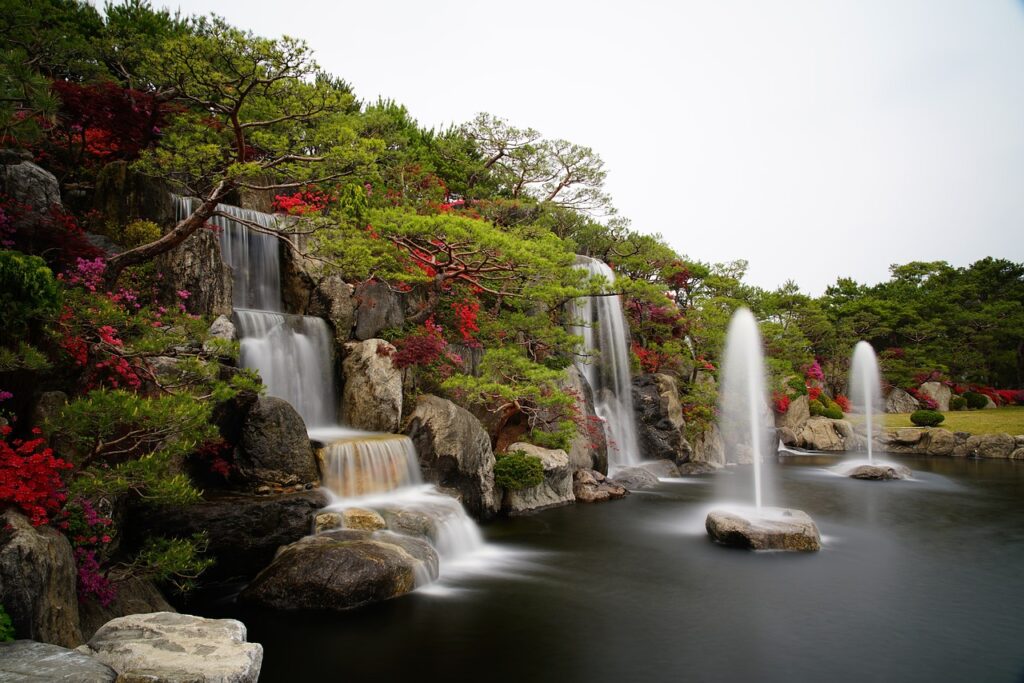
Recently, Goth gardens have surged in popularity among garden enthusiasts seeking to express their individuality through unconventional design. There are several reasons for this trend. Goth gardens offer a unique way to connect with the natural world. For those who find solace in life’s darker aspects, these gardens can serve as a retreat—a sanctuary where shadows and light mingle, and introspection comes easily. It’s a space where one might sit beneath a dark canopy of trees, reading Poe’s The Raven under the moonlight.
Goth gardens encourage creativity and experimentation. Traditional norms can be bent or broken entirely, allowing for imaginative plant choices, unusual color combinations, and striking architectural elements. This freedom allows gardeners to create spaces that are deeply personal and evocative.
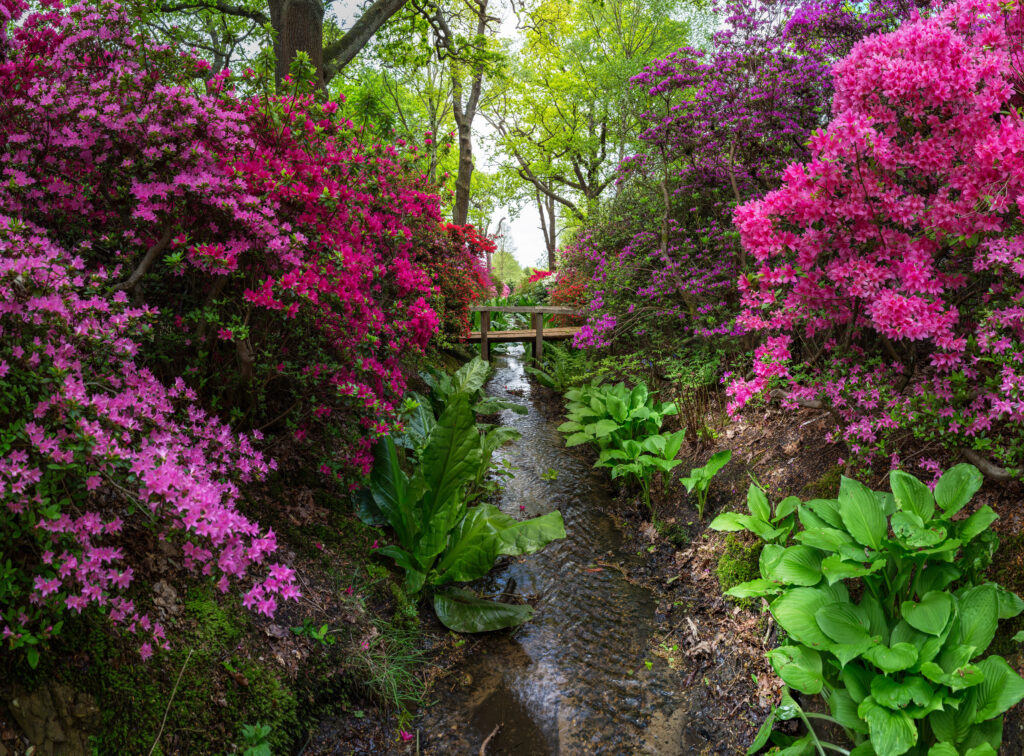
As Gothic themes continue to permeate contemporary culture—through fashion, music, literature, and film—the allure of the Gothic is inescapable. Goth gardens provide an immersive, tactile way to live within this aesthetic, making it accessible not just on the screen or page but in real, lived spaces.
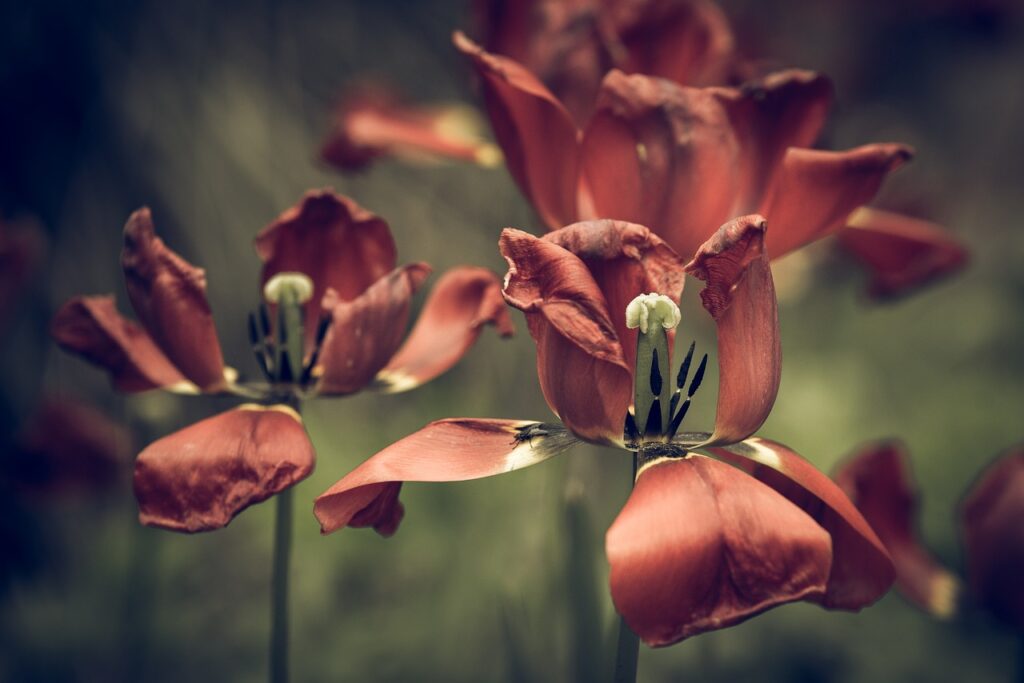
Designing Your Gothic Garden:
Designing a Goth Garden requires selecting plants that contribute to its dark, mysterious aesthetic. Here are a few ideal choices:
Flowers and Foliage:
Black Tulips (Tulipa ‘Queen of Night’) These deep, almost black tulips are a haunting addition to any flower bed.
Black Hollyhocks (Alcea rosea ‘Nigra’) Tall, velvety flowers that create a striking focal point.
Black Petunias (Petunia ‘Black Velvet’) Intensely dark, velvety petals that look captivating in pots or garden beds.
Dark Irises (Iris ‘Before the Storm’) Their deep purple, nearly black flowers evoke elegance and mystery.
Beefsteak Plant (Perilla frutescens) Also known by its Japanese name, shiso this crop’s dark purple, fragrant leaves are used in a variety of Asian cuisines, along with their seeds and seed oils. This herb’s distinct flavor also makes it a favorite for pickling.
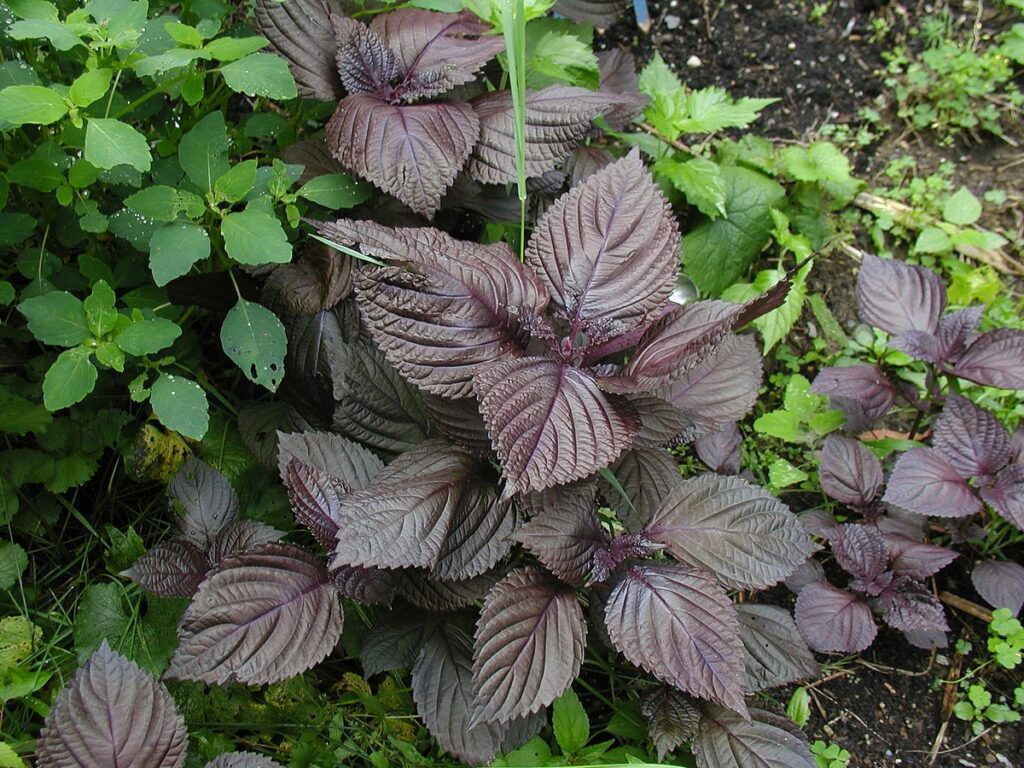
Black Mondo Grass (Ophiopogon planiscapus ‘Nigrescens’) A dark ground cover that offers rich contrast.
Bat Flower (Tacca chantrieri) Known for its unique bat-shaped flowers, this exotic plant adds intrigue in the garden.
Purple Smoke Bush (Cotinus coggygria ‘Royal Purple’) This shrub has dark purple foliage that looks almost black in certain lights, adding height and structure to the garden.
Bat Flower (Tacca chantrieri) Known for its unique, bat-shaped dark flowers, this plant adds an exotic touch to the garden.
Black Calla Lilies (Zantedeschia ‘Black Star’) These lilies have strikingly dark flowers and can add a touch of elegance to any garden bed.
Black Scabiosa (Scabiosa atropurpurea ‘Black Knight’) Also known as pincushion flower, this plant has deep maroon flowers that appear almost black.
Nasturtiums- Black Velvet (Tropaeolum minus) Mahogany blooms
Shrubs and Trees
Black Elderberry (Sambucus nigra ‘Black Lace’) This shrub has dark purple, almost black leaves and produces pink flowers that contrast beautifully.
Purple Ninebark (Physocarpus opulifolius ‘Diabolo’) This shrub features dark purple foliage and can create a dramatic backdrop.
Japanese Maple (Acer palmatum ‘Bloodgood’) With its dark red to purple foliage, this small tree can add a gothic touch to your garden.
Black Bamboo (Phyllostachys nigra) This bamboo has dark, almost black stems and adds height and an exotic feel to the garden.
Ground Covers and Climbers
Ajuga (Ajuga reptans ‘Black Scallop’) This ground cover has dark, glossy leaves and can add depth to the garden floor.
Black Sweet Potato Vine (Ipomoea batatas ‘Blackie’) This vine has dark, almost black foliage and can be used in containers or as ground cover.
Dark Clematis (Clematis ‘Romantika’) This climbing plant has deep purple flowers that appear almost black and can cover trellises or fences.
Gayil Nalls, Ph.D., is the creator of World Sensorium and founder of the World Sensorium/Conservancy.
Plantings
Issue 40 – October 2024
Also in this issue:

Microbial Aromas Might Save Crops from Drought
By Ruth Schmidt
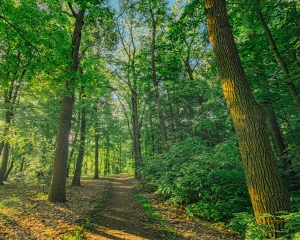
Can Trees Heal You?
By Catlin Chandler

The Chipko Movement: An Indian Tree-Hugging Protest that Revolutionized Environmentalism
By Gayil Nalls

The Art of The Brew: Brewing Tradition and Cultural Memory
By Gayil Nalls

How to Stop Being a Throwaway Culture: A Path Towards Sustainability
By WS/C Staff

Eat More Plants Recipes:
Spinach Pasta
By John Steele

As Ireland transitions from the rich, smoky scent of peat-burning to a more sustainable future, its olfactory heritage is evolving. What will become the next iconic aromatic symbol of Ireland?
Click to watch the documentary trailer.

